Related Research Articles

Pope Gregory XI was head of the Catholic Church from 30 December 1370 to his death, in March 1378. He was the seventh and last Avignon pope and the most recent French pope recognized by the modern Catholic Church. In 1377, Gregory XI returned the Papal court to Rome, ending nearly 70 years of papal residency in Avignon, France. His death was swiftly followed by the Western Schism involving two Avignon-based antipopes.

The Papal States, officially the State of the Church, were a conglomeration of territories on the Apennine Peninsula under the direct sovereign rule of the Pope from 756 to 1870. They were among the major states of Italy from the 8th century until the Unification of Italy, which took place between 1859 and 1870, and culminated in their demise.

Early modern Europe, also referred to as the post-medieval period, is the period of European history between the end of the Middle Ages and the beginning of the Industrial Revolution, roughly the mid 15th century to the late 18th century. Historians variously mark the beginning of the early modern period with the invention of moveable type printing in the 1450s, the Fall of Constantinople and end of the Hundred Years' War in 1453, the end of the Wars of the Roses in 1485, the beginning of the High Renaissance in Italy in the 1490s, the end of the Reconquista and subsequent voyages of Christopher Columbus to the Americas in 1492, or the start of the Protestant Reformation in 1517. The precise dates of its end point also vary and are usually linked with either the start of the French Revolution in 1789 or with the more vaguely defined beginning of the Industrial Revolution in late 18th century England.

The Kingdom of Naples was a state that ruled the part of the Italian Peninsula south of the Papal States between 1282 and 1816. It was established by the War of the Sicilian Vespers (1282–1302), when the island of Sicily revolted and was conquered by the Crown of Aragon, becoming a separate kingdom also called the Kingdom of Sicily. This left the Neapolitan mainland under the possession of Charles of Anjou. Later, two competing lines of the Angevin family competed for the Kingdom of Naples in the late 14th century, which resulted in the death of Joanna I by Charles III of Naples. Charles' daughter Joanna II adopted King Alfonso V of Aragon as heir, who would then unite Naples into his Aragonese dominions in 1442.
This article deals with the history of Tuscany.
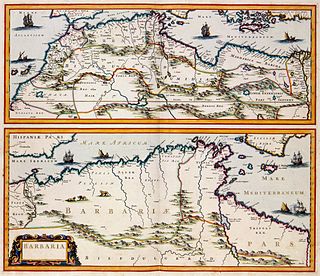
The Barbary Coast was the name given to the coastal regions of central and western North Africa or more specifically the Maghreb and the Ottoman borderlands consisting of the regencies in Algiers, Tunis, and Tripoli, as well as the Sultanate of Morocco from the 16th to 19th centuries. The term originates from an exonym for the Berbers.

The Duchy of Milan was a state in Northern Italy, created in 1395 by Gian Galeazzo Visconti, then the lord of Milan, and a member of the important Visconti family, which had been ruling the city since 1277.

The Grand Duchy of Tuscany was an Italian monarchy that existed, with interruptions, from 1569 to 1860, replacing the Republic of Florence. The grand duchy's capital was Florence. In the 19th century the population of the Grand Duchy was about 1,815,000 inhabitants.
The Military Revolution is the theory that a series of radical changes in military strategy and tactics during the 16th and 17th centuries resulted in major lasting changes in governments and society. The theory was introduced by Michael Roberts in the 1950s as he focused on Sweden (1560–1660) searching for major changes in the European way of war caused by the introduction of portable firearms. Roberts linked military technology with larger historical consequences, arguing that innovations in tactics, drill and doctrine by the Dutch and Swedes (1560–1660), which maximized the utility of firearms, led to a need for more trained troops and thus for permanent forces. Armies grew much larger and more expensive. These changes in turn had major political consequences in the level of administrative support and the supply of money, men and provisions, producing new financial demands and the creation of new governmental institutions. "Thus, argued Roberts, the modern art of war made possible—and necessary—the creation of the modern state".
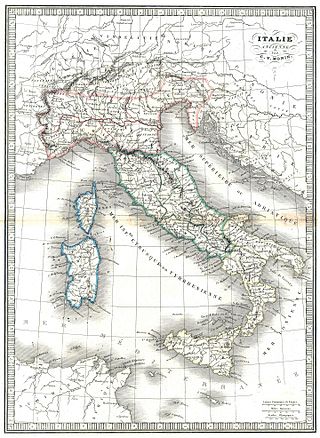
The history of early modern Italy roughly corresponds to the period from the Renaissance to the Congress of Vienna in 1814. The following period was characterized by political and social unrest which then led to the unification of Italy, which culminated in 1861 with the proclamation of the Kingdom of Italy.
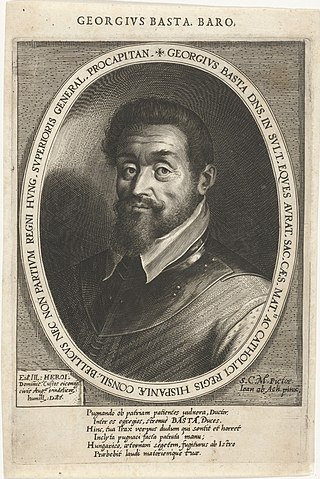
Giorgio Basta, Count of Huszt, Gjergj Basta or Gheorghe Basta was an Italian general, diplomat, and writer of Arbëreshë Albanian origin, employed by the Holy Roman Emperor Rudolf II to command Habsburg forces in the Long War of 1593–1606. He was later sent to administer Transylvania as an Imperial vassal and to restore Catholicism as the dominant religion in the region.
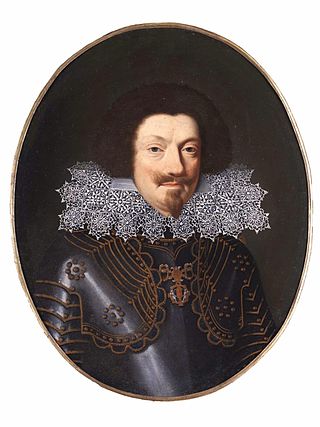
The War of the Mantuan Succession (1628–1631) was a conflict related to the Thirty Years' War and was caused by the death in December 1627 of Vincenzo II, the last male heir in the direct line of the House of Gonzaga and the ruler of the duchies of Mantua and Montferrat. Those territories were key to control of the Spanish Road, an overland route that allowed Habsburg Spain to move recruits and supplies from Italy to their army in Flanders. The result was a proxy war between France, which supported the French-born Duke of Nevers, and Spain, which backed a distant cousin, the Duke of Guastalla.

The State of the Presidi was a small territory on the Tuscan coast of Italy that existed between 1557 and 1801. It consisted of remnants of the former Republic of Siena—the five towns of Porto Ercole and Porto Santo Stefano on the promontory of Monte Argentario, as well as Orbetello, Talamone and Ansedonia—and their hinterland, along with the islet of Giannutri and the fortress of Porto Longone on the island of Elba.
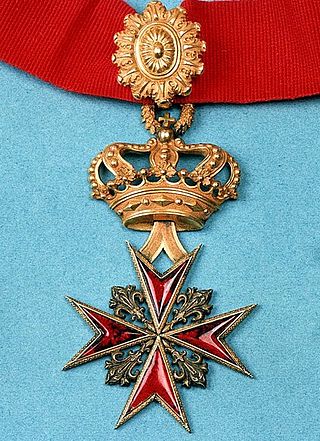
The Order of Saint Stephen is a Roman Catholic Tuscan dynastic military order founded in 1561. The order was created by Cosimo I de' Medici, first Grand Duke of Tuscany. The last member of the Medici dynasty to be a leader of the order was Gian Gastone de Medici in 1737. The order was permanently abolished in 1859 by the annexation of Tuscany to the Kingdom of Sardinia. The former Kingdom of Italy and the current Italian Republic also did not recognize the order as a legal entity but tolerates it as a private body.
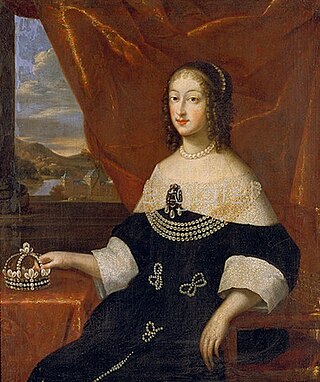
The Piedmontese Civil War, also known as the Savoyard Civil War, was a conflict for control of the Savoyard state from 1639 to 1642. Although not formally part of the 1635 to 1659 Franco-Spanish War, Savoy's strategic importance drew in both Habsburg Spain, which controlled the nearby Duchy of Milan, and France.

Siena is a city in Tuscany, Italy. It is the capital of the province of Siena. Siena is the 12th largest city in the region by number of inhabitants, with a population of 53,062 as of 2022.

The Occitans are a Romance-speaking ethnic group originating in the historical region of Occitania. They have been also called Gascons, Provençals, and Auvergnats.

Federico Spinola (1571–1603) was an Italian naval commander in Spanish Habsburg service during the Dutch Revolt.

The Albanian Battalions (1775-1859) were ethnic units of the Russian Imperial Army that were made up mostly of Albanians; fighting against the Ottoman Empire.
References
- ↑ "Gregory Hanlon". Department of History. Dalhousie University. Retrieved 25 January 2015.
- ↑ Farr, James (April 1995). "Review: Confession and Community in Seventeenth-Century France: Catholic and Protestant Coexistence in Aquitaine by Gregory Hanlon". The American Historical Review. 100 (2): 526–27. doi:10.2307/2169074. JSTOR 2169074.
- ↑ The Twilight of a Military Tradition: Italian Aristocrats and European Conflicts, 1560–1800
- ↑ Symcox, Geoffrey (December 2000). "Review: The Twilight of a Military Tradition: Italian Aristocrats and European Conflicts, 1560-1800 by Gregory Hanlon". The American Historical Review. 105 (5): 1830–1831. doi:10.2307/2652191. JSTOR 2652191.
- ↑ American Society of Church History
- ↑ Society for Italian Historical Studies: Helen and Howard R. Marraro Prize in Italian History
- ↑ Hanlon, G. (1993) Confession and Community in Seventeenth Century France: Catholic and Protestant Coexistence in Aquitaine. Pennsylvania: University of Pennsylvania Press
- ↑ Hanlon, G. (1998) The Twilight of a Military Tradition; Italian aristocrats and European conflicts 1560-1800. London & New York: Taylor & Francis and Holmes & Meier
- ↑ Hanlon, G. (2000) Early Modern Italy 1550-1800: Three seasons in European History. London & New York: Palgrave Macmillan, London & New York
- ↑ Hanlon, G. (2002) Storia dell’Italia Moderna 1550-1800. Bologna: Mulino
- ↑ Hanlon, G. (2007) Human Nature in Rural Tuscany: an early modern history London & New York: Palgrave Macmillan
- ↑ Hanlon, G. (2008) Vita rurale in Terra di Siena nel Seicento: natura umana e storia Siena: Pascal Editrice